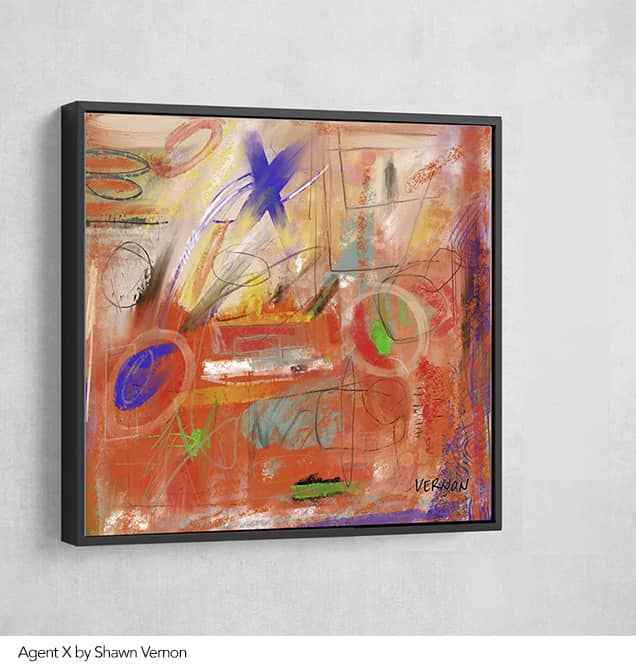
Understanding Abstract Art
Table of Contents
- Introduction: What is Abstract Art?
- A Brief History of Abstract Art
- Key Characteristics of Abstract Art
- Techniques Used in Abstract Art
- The Significance of Abstract Art in Contemporary Art
- Exploring the Impact of Abstract Art on Viewers
- How to Interpret Abstract Art: Finding Personal Meaning
- The Debate Surrounding Abstract Art
- Notable Abstract Artists and Their Contributions
- Abstract Art in Different Art Forms
- The Influence of Abstract Art in Design and Architecture
- Collecting Abstract Art: Tips for Art Enthusiasts
- Abstract Art in the Digital Age
- Abstract Art Exhibitions and Galleries
- Conclusion
1. Introduction: What is Abstract Art?
Abstract art is a form of visual representation that does not attempt to portray the physical appearance of objects or subjects as they exist in reality. Instead, it focuses on exploring the realm of emotions, ideas, and concepts through the use of colors, shapes, lines, and forms. Abstract artists aim to create artwork that engages viewers on a deeper level, evoking personal emotions and interpretations.
2. A Brief History of Abstract Art
Abstract art emerged as a significant artistic movement in the early 20th century, fueled by the desire to break free from traditional representational art. Pioneering artists such as Wassily Kandinsky, Piet Mondrian, and Kazimir Malevich challenged the notion that art should imitate reality. They sought to express their inner worlds and spiritual beliefs through abstract forms, giving birth to a new era of artistic expression.
3. Key Characteristics of Abstract Art
Abstract art possesses several key characteristics that distinguish it from other art forms. First and foremost, it prioritizes non-representational imagery, allowing artists to convey their ideas and emotions without relying on recognizable subjects. Additionally, abstract art often emphasizes the use of colors, shapes, lines, and textures to create visual impact and evoke specific moods or sensations. It encourages viewers to explore their own interpretations and connect with the artwork on a personal level.
4. Techniques Used in Abstract Art
Abstract artists employ various techniques to bring their artistic visions to life. Some artists use spontaneous brushstrokes and gestures to create dynamic and expressive compositions. Others utilize geometric shapes and precise lines to achieve a sense of order and structure within their artwork. Collage, mixed media, and experimental materials are also commonly employed to add texture and depth to abstract pieces. By experimenting with different techniques, artists can push the boundaries of creativity and innovation.
5. The Significance of Abstract Art in Contemporary Art
Abstract art continues to play a crucial role in contemporary art. It challenges conventional notions of representation and allows artists to explore new possibilities in artistic expression. Abstract artworks often provoke thought, spark discussions, and evoke emotional responses. They offer a gateway to introspection and self-reflection, providing viewers with the freedom to interpret the artwork based on their own experiences and perspectives.
6. Exploring the Impact of Abstract Art on Viewers
Abstract art has a profound impact on viewers, often evoking a range of emotions and responses. Its non-representational nature allows for individual interpretation and personal connections. Abstract art can ignite curiosity, stimulate the imagination, and challenge our perceptions of reality. It encourages viewers to question, reflect, and engage with the artwork on a deeper level.
7. How to Interpret Abstract Art: Finding Personal Meaning
Interpreting abstract art is a subjective process that relies on personal perception and experiences. To find personal meaning in abstract artworks, take a step back and observe the composition as a whole. Notice the colors, shapes, and lines and how they interact with one another. Allow yourself to be open to different interpretations and emotions that the artwork evokes. Trust your intuition and let your own thoughts and associations guide your understanding of the artwork.
8. The Debate Surrounding Abstract Art
Abstract art has been the subject of ongoing debate and criticism throughout its history. Some argue that it lacks skill or technique, while others question its relevance and meaning. However, abstract art has also garnered immense appreciation and acclaim. It has challenged traditional artistic conventions, pushed boundaries, and paved the way for new artistic possibilities. The debate surrounding abstract art continues to fuel discussions and shape the evolution of art.
9. Notable Abstract Artists and Their Contributions
Several notable abstract artists have made significant contributions to the field. Wassily Kandinsky, often regarded as the pioneer of abstract art, explored the spiritual and emotional aspects of color and form. Piet Mondrian emphasized geometric abstraction, using grids and primary colors to create a sense of harmony and balance. Joan Miró's whimsical and playful abstract artworks reflected his imagination and surrealistic vision. These are just a few examples of the many influential abstract artists who have shaped the genre.
10. Abstract Art in Different Art Forms
Abstract art extends beyond traditional paintings and encompasses various art forms. Sculpture, photography, printmaking, and even performance art can incorporate abstract elements. The freedom of expression found in abstract art allows artists in different mediums to explore the use of colors, forms, and textures to convey their ideas and emotions.
11. The Influence of Abstract Art in Design and Architecture
Abstract art has had a significant influence on design and architecture. Its emphasis on aesthetics, composition, and experimentation has inspired innovative approaches in these fields. Architects and designers often draw inspiration from abstract art to create visually striking structures, interiors, and products. Abstract art's focus on form, balance, and visual impact can be seen in contemporary buildings, furniture, and graphic design.
12. Collecting Abstract Art: Tips for Art Enthusiasts
Collecting abstract art can be an exciting and fulfilling endeavor. Here are a few tips for art enthusiasts interested in starting their abstract art collection:
- Research and familiarize yourself with different abstract artists, styles, and movements.
- Visit galleries, art fairs, and exhibitions to explore and discover emerging and established abstract artists.
- Set a budget and determine your collecting focus or theme.
- Develop relationships with artists, galleries, and experts in the field.
- Trust your instincts and choose artwork that resonates with you personally.
- Consider the artwork's provenance, condition, and authenticity.
- Keep track of your collection and ensure proper documentation and maintenance.
- Connect with other art enthusiasts and collectors to exchange knowledge and experiences.
13. Abstract Art in the Digital Age
The digital age has brought new possibilities for abstract art. Digital tools and software have enabled artists to explore abstract concepts in virtual spaces, creating immersive and interactive artworks. Digital platforms and social media have also provided avenues for artists to showcase and share their abstract art with a global audience. The digital landscape continues to shape and expand the boundaries of abstract art.
14. Abstract Art Exhibitions and Galleries
Abstract art exhibitions and galleries offer a platform for artists to showcase their creations and for art enthusiasts to immerse themselves in the world of abstract art. These exhibitions provide a curated selection of artworks that explore different themes, styles, and approaches within abstract art. Visiting abstract art exhibitions and galleries is an excellent way to engage with the art community, discover new artists, and deepen your appreciation for abstract art.
15. Conclusion
Understanding abstract art requires an open mind and a willingness to explore beyond the realm of representational art. Abstract art offers a unique avenue for artists to express their inner thoughts, emotions, and ideas. By deviating from the constraints of realistic representation, abstract art opens up endless possibilities for creativity and interpretation.
Through the use of colors, shapes, lines, and forms, abstract art invites viewers to embark on a personal journey of discovery and introspection. It challenges us to delve into our own experiences and emotions, allowing for individual interpretations and connections with the artwork.
Abstract art continues to captivate audiences and play a vital role in the world of contemporary art. Its ability to evoke emotions, spark conversations, and transcend traditional artistic boundaries makes it a powerful form of expression.
Whether you find yourself drawn to the vibrant colors and bold brushstrokes or fascinated by the intricate patterns and textures, abstract art offers something for everyone. Take the time to explore and engage with abstract artworks, and you may discover a whole new world of artistic expression waiting to be discovered.
FAQs (Frequently Asked Questions)
1. What is the purpose of abstract art?
Abstract art allows artists to express their emotions, thoughts, and ideas in a non-representational manner. It encourages viewers to explore their own interpretations and connect with the artwork on a personal level.
2. How do I interpret abstract art?
Interpreting abstract art is subjective and personal. Take your time to observe the artwork, pay attention to the colors, shapes, lines, and forms, and let your emotions and imagination guide your interpretation.
3. Can abstract art have meaning?
Yes, abstract art can have meaning. The meaning may vary from artist to artist and from viewer to viewer. Each individual brings their own experiences and perspectives to the artwork, allowing for multiple meanings and interpretations.
4. Is abstract art only about random splashes of color?
No, abstract art is not limited to random splashes of color. While some abstract artworks may appear spontaneous, they often involve deliberate choices and techniques by the artist to convey specific emotions or concepts.
5. How can I start collecting abstract art?
If you're interested in collecting abstract art, start by exploring different artists, galleries, and exhibitions. Educate yourself about different techniques and styles, and trust your instincts when choosing artwork that resonates with you.
Shawn Vernon https://shawnvernon.com
